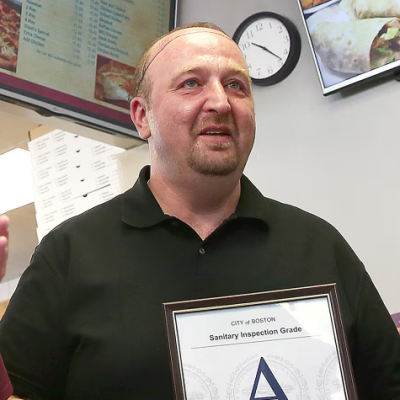Longer school lunches benefit everyone
Sometimes you’re waking up at 5:30 a.m. or 6 a.m. — sometimes earlier — just to go to school on time, depending on how far you live from the school. 7:30 a.m. is the beginning of the first period and each class is an hour long.
By the time lunch rolls around, you are exhausted and can barely walk up the dozen steps to go to the cafeteria. Then you have to stand there in line for what seems like forever just to sometimes not eat because the food isn’t good. We sometimes get rice and beans for lunch and the beans are cold while the rice is stale. They sometimes serve rice and chicken but the rice is stale and the chicken tastes horrible. The burgers are the worst and the pasta is always either cold or disgusting.
You sit down in the cafeteria, students around you buzzing and you start having a conversation with your friends — and two seconds later, there’s the bell for the end of lunch. You look down at your unfinished food wishing for more time to eat and talk, feeling disappointed.
The school I currently attend is Madison Park Technical Vocational High, a place where students take regular classes as well as learn a trade of their choosing. The lunchtime in the school currently is only 20 minutes, while last year the lunchtime used to be 35 minutes.
The students were told the lunchtime got shorter because we were getting out earlier. Last year we used to get out of school at 2:35 p.m. and this year we leave school at 2:20 p.m. Longer lunchtime means a longer school day, which most students are fine with. The students were furious with the lunchtime because it goes by in a breeze and it’s not enough.
Madison Park should provide more lunchtime to the students because the long lines in front of the cafeteria start when the bell rings at 11:47 a.m. and it’s first come first serve. Sometimes good food is given at the beginning and if you have to come to the cafe from the basement for example you would miss out on the food.
Parents and teachers should care about this topic because it affects our students both physically and mentally, according to professor and author Karen Le Billon.
“If we are giving our children a short lunch break, we are teaching them that food is an inconvenience, and eating is an interruption in the day,” Le Billon wrote in 2012.“It’s a life skill like reading.”
In other words, shorter lunch times will hurt our kids mentally and enforce that food isn’t important and that we shouldn’t take time off to completely digest our food and eat them healthily. We teach our kids to rush eating or even not stop to take time and eat with shorter lunchtime.
Some people argue that a longer lunchtime could result in students spending more time goofing off and not retaining what they learned in class and not being open-minded about what they will learn in class. They are wrong because the longer you spend in class the less you are able to retain the work being done because your mind tends to wander off. Lunchtime is a time when students get a break from being in class and are able to just be there and relax their minds for a while. Longer lunchtimes are proven to work. According to the Baltimore Sun, Arundel High has a 50-minute lunch period. “It’s going to solve many problems.” Arundel High biology teacher Janet Epple told the Sun.
Students will be able to function better with longer lunch times and that is proven. The shorter the lunch time the more unhealthy the students become because they don’t have time to eat, relax their minds, get extra help, or even take a break. During lunch, you can talk to your friends or just sit there listening to music just calming your mind. You can catch up on some work or go to a teacher you need help from. Lunch is where you make new friends and get to know new people. If students don’t have the time to practice their social skills and talk to others then that doesn’t help them step out of their comfort zone meaning they will be shy and unwilling to speak up. People who are against longer lunch periods would say that having longer lunchtime cuts away from class time and makes students unfocused.
Think about it — even as an adult would you care for longer lunch times or shorter lunch times? The administrators in the schools should provide a longer lunch period to help their students perform the best they can and do it in a healthy manner. If you think your school deserves a longer lunch period, speak to your principal about it and get it fixed. Don’t be afraid to speak up about your wants.










